The North Indian Culture showcases a diverse background shaped by history, geography, and influences. With Jammu and Kashmir, nestled in the Himalayas, enchants with its scenic places with snow-capped peaks. Delhi is the bustling core, Rajasthan's royal heritage, Uttarakhand and Himachal Pradesh embrace serene landscapes, and Uttar Pradesh's spiritual significance, each state contributes distinct flavours. Punjab and Haryana, neighbouring states, offer a harmonious blend of dynamic culture and historical importance, contributing to North India's diverse heritage.
The North Indian Culture reverberates with classical music, vibrant dance forms, intricate crafts, and a rich culinary tradition. This blog walks you through this ethereal experience.
Table of Contents
Rich Heritage of Arts and Crafts
Jammu and Kashmir, a land of breathtaking landscapes, is equally renowned for its arts and crafts. The region is celebrated for its intricate Pashmina shawls, known for their fine craftsmanship and warmth. The traditional Jammu & Kashmiri carpet industry produces exquisite hand-woven rugs with intricate designs. Papier-mâché art, a legacy of the region, showcases intricate motifs and vibrant colours. Jammu and Kashmir's arts and crafts are a testament to its rich cultural heritage and skilled craftsmanship.
Himachal Pradesh's arts and crafts reflect its natural beauty and vibrant culture. The region is known for its intricate Kullu shawls, woven with colourful patterns and fine wool. Wood carving is a prominent craft, with artisans creating intricate designs on furniture, temples, and other objects. The Chamba Rumal, a traditional embroidery form, adorns textiles with mythological motifs. Himachali paintings, characterised by bold colours and intricate detailing, depict local deities and stories, adding to the state's artistic legacy.
Uttar Pradesh, a cultural hub of India, boasts a rich array of arts and crafts. Renowned for Chikankari embroidery in Lucknow and Banarasi silk sarees in Varanasi, the state showcases intricate craftsmanship. From wood carvings in Saharanpur to terracotta art in the Brij region, its diverse creations reflect tradition and innovation. Glassware from Firozabad and folk paintings like the Sanjhi art of Mathura add to the state's vibrant artistic landscape, preserving its heritage through creative expressions.
Rajasthan's art and crafts are a reflection of its rich architectural heritage and cultural diversity. The state is renowned for its intricate and vibrant textiles, including tie-and-dye Bandhani and hand-block printed fabrics. Jaipur's jewellery craftsmanship is famous worldwide, particularly in precious and semi-precious stones. Due to its distinctive blue glaze, the region's traditional pottery, known as Blue Pottery, showcases exquisite craftsmanship. Additionally, Rajasthan's miniature paintings of the 18th century, often depicting royal life and epic tales, add to the state's artistic legacy, making it a hub of creativity and skill.
Uttarakhand's arts and crafts encapsulate the state's natural beauty and cultural identity. Pahari paintings, known for their intricate detailing and use of natural pigments, depict spiritual and mythological themes. North India is known for wooden handicrafts, from intricately carved doors to decorative items that showcase skilled craftsmanship. Woollen textiles, including the region's warm shawls and blankets, reflect utility and artistry. Uttarakhand's artistic expressions harmonise with its breathtaking landscapes, celebrating tradition and creativity.
Miniature mural paintings of Northern India are intricate and vivid artistic treasures. Originating in the 19th century, these paintings depict mythological tales, royal life, and historical events in the Mughal and Rajput courts. These Indian Paintings feature detailed brushwork, rich colours, and delicate patterns, often highlighting the grace and elegance of the figures. Miniature paintings are a captivating window into the cultural and artistic heritage of the region, showcasing the mastery of artists who brought stories to life on a tiny canvas. They are the source of the national emblem of India. The region's cultural celebrations are often infused with artistic expressions. Festivals like Diwali, Holi, and Navratri are occasions of religious significance and platforms for showcasing the arts.
Northern Indian folk dance styles mirror the region's cultural vibrancy. Popular dance form like Bhangra from Punjab is a high-energy dance marked by lively steps and vibrant costumes. Uttar Pradesh's Ras Leela depicts Lord Krishna's stories through graceful movements, while the Charkula dance involves balancing lit oil lamps on the head. Himachal Pradesh's Phag Dance is a celebration of the Phag festival, Pandva Nritya from Uttarakhand, and the Rouf of Kashmir is an elegant form performed during weddings and festivals. These folk dances encapsulate the rich traditions and stories of North India's diverse communities. This dance originated in the nomadic bards of ancient North India.
Shastriya Sangeet, also known as Indian Classical Music, is a classical phase and traditional form of rhythmic cycle music rooted in ancient Indian culture. It encompasses two major genres: Hindustani and Carnatic music which evolved around the 12th century. The central notion of Shastriya Sangeet is characterised by intricate melodic modes, scales (ragas), rhythmic patterns or rhythmic organisation (talas), and emotive expressions. Classical music is learned through disciplined training and has a profound spiritual and aesthetic connection. This melodic foundation of Hindustani and Carnatic music in art form continues to be part of North India and is cherished for its deep cultural significance.
The North Zone Cultural Centre (NZCC) in India plays a pivotal role in promoting and preserving the rich cultural heritage of the northern states. It organises cultural events, festivals, workshops, and exhibitions to showcase traditional music, dance, art, and crafts. North Zone Cultural Centre also fosters intercultural exchange and collaboration, helping to bridge the gap between diverse communities and fostering a sense of unity through cultural expressions. Ministry of Culture, Government of India also plays a significant role.
Northern India is famous for the Kud dance of Jammu & Kashmir. It is the way to thank local deities on the night of the rainy season with the beats of the drum-like instrument Narsingha. From the lively Bhangra (a dance for men) and the graceful Giddha (a dance for women) in Punjab to the spirited Jaguars and Pandva Nritya in Uttarakhand, and the elegant Rouf in Kashmir, the North Indian region exuberantly showcases its cultural wealth and traditions. This vibrant tapestry includes the classical Kathak dance of Uttar Pradesh, the captivating Ghoomar and Kalbeliya dances of Rajasthan, and the energetic Nati dance of Himachal Pradesh.
The Ministry of Culture, Government of India, is responsible for preserving, promoting, and developing India's diverse cultural heritage and artistic expressions. It oversees various aspects of culture, including performing arts, visual arts, literature, museums, monuments, and traditional knowledge. The Ministry Of Culture, Government of India, supports and nurtures creativity, facilitates cultural exchange, and enriches India's cultural landscape. It is vital in promoting national and international awareness of India's cultural richness and traditions.
Language
North Indian languages, primarily belonging to the Indo-Aryan language family, and European languages are distantly related through a common ancestor known as the Indo-European language family. Both language groups share linguistic similarities due to their shared origin in this broader language family.
South Indian languages (Dravidian language) differ from North Indian languages (Indo-Aryan family) in terms of grammar, sounds, vocabulary, scripts, and cultural ties. They have distinct linguistic roots and reflect India's linguistic diversity.
Swami Dayananda Saraswati: 19th-century reformer founded Arya Samaj, promoted Vedic principles and social equality, and influenced Indian society and the independence movement.
Bhartendu Harishchandra: 19th-century Hindi writer, "Father of Modern Hindi Literature," revived and modernized the Hindi language and literature, addressing social issues and cultural identity.
Famous literary scholars and writers from North India include Prithiviraj Raso, Munshi Premchand (Hindi), Rabindranath Tagore (Bengali), Amrita Pritam (Punjabi), Harivansh Rai Bachchan (Hindi), Khushwant Singh (Punjabi), Ismat Chughtai (Urdu), Saadat Hasan Manto (Urdu), Mahavir Prasad Dwivedi and Ramdhari Singh Dinkar (Hindi).
North Indian Cuisine
Northern region cuisine is a kaleidoscope of flavours, spices, and textures that reflects Indian food and Western influence with rich history, diverse culture, and culinary innovation. Spanning a range of delectable Indian dishes, from hearty bread to aromatic curries, North Indian cuisine is a gastronomic journey that has captured the hearts and palates of food enthusiasts worldwide.
Popular forms of flatbread eaten are roti, a staple food is a cereal-based food made of whole wheat flatbread, and Naan, a leavened bread, which are staples that accompany a variety of vegetarian curry dishes commonly called chapatis with sabzi. Paratha, another popular form of roti eaten, is a cereal-based food often stuffed with fillings like vegetables or Indian cottage cheese.
The aromatic vegetarian curry dish, Chole Bhature, is also a popular form of flatbread eaten with a spicy chickpea (leguminous food product )curry served with deep-fried bread, which exemplifies the region's love for contrasting textures and bold flavours.
North India's culinary landscape is enriched by a variety of Indian dishes and vegetarian curry dishes featuring other leguminous food products and bean dishes, such as the hearty Dal Makhani, flavorful Chana Masala, aromatic and popular lentil dish, Rajma (kidney bean dish), and the traditional Punjabi food, Sarson da Saag paired with Makki di Roti(form of flatbread eaten), highlighting the region's love for bean dishes and legumes. Other popular lentil dishes or bean dishes like Lobia Masala (black-eyed peas) and the nutritious Moong Dal Tadka showcase the region's mastery in turning bean dishes into culinary delights.
Chaat, a crispy fried form of roti, tangy chutneys, yoghurt, and spices, is a popular street snack with a balance of sweet, spicy, and sour flavours. Samosas, deep-fried pastry pockets filled with spiced potatoes or meat, are another beloved street food staple.
Bal Mithai is a popular sweet from Uttarakhand, India. Made from roasted khoya (milk solids) and coated with cane sugar, it has a distinctive brown colour. This traditional treat is loved for its unique flavour and texture, making it a beloved dessert in the region.
Rajasthani cuisine sweets offer a delightful taste of its culinary heritage. The famous dessert Ghewar, a disc-shaped sweet made with flour, ghee, and sugar syrup, is a festive favourite. Mawa Kachori, a deep-fried pastry stuffed with sweetened khoya (milk solids), and Malpua, a syrup-soaked pancake, are also cherished traditional sweets in the state.
Non-Vegetarian Indian foods in urban centres are flavorful and appetising. North India's non-vegetarian food is a flavourful array of dishes like succulent Tandoori Chicken, rich Butter Chicken, aromatic Biryani, and savoury Kebabs, reflecting the region's diverse culinary heritage. There are plenty of other dishes in non-vegetarian food which are eaten with rice or any form of roti. Both North and South India offer delicacies that are famous worldwide.
Tourist Attractions
North India tourism is a treasure trove of diverse landscapes, historical marvels, and cultural riches, offering exotic destinations that cater to all types of travellers. From ancient monuments to scenic hill stations, North India Tourism promises a captivating journey that captures the essence of India's vibrant heritage. Ministry of Culture, Government of India works together to enhance the experience of tourists. Embark on a North India tour that includes a visit to Delhi, a bustling city with vibrant culture and historical monuments like the Red Fort and Qutub Minar, juxtaposed against modernity in areas like Connaught Place, which is a microcosm of India's past and present. The bustling streets of Chandni Chowk, the serenity of Lotus Temple, and the grandeur of India Gate make it a must-visit destination.
Agra, famous for the iconic Taj Mahal, offers a glimpse into India's Mughal history. The Agra Fort and Fatehpur Sikri, both UNESCO World Heritage Sites, showcase the perfect blend of Muslim and Indian architectural prowess.
Jaipur's royal heritage is reflected in its opulent palaces like the Hawa Mahal and the City Palace. The Amber Fort, with its beautiful features, intricate architecture, and panoramic views, is a testament to Rajasthan's grandeur and forms the best part of the North India Tour.
Varanasi, situated on the banks of the Ganges, is a pilgrimage site and a spiritual epicentre of the country. Its ghats, where religious rituals and ceremonies occur, and the Kashi Vishwanath Temple attract pilgrims and travellers seeking cultural immersion in North India, similar to Tirupathi in South India.
North India Tourism includes the hill stations of Shimla and Manali in Himachal Pradesh offer respite from the plains' heat. Surrounded by breathtaking landscapes, they provide opportunities for trekking, skiing, and exploring picturesque landscapes in North India Tour, similar to hill stations like Ooty, Coorg, Munnar, etc., in South India. Holy sites such as Rishikesh and Haridwar are twin towns along the Ganges known for their spiritual significance. They are hubs for yoga and meditation retreats. Rishikesh is also a starting point for the Char Dham Yatra pilgrimage in the hilly region. It is a significant part of North India Tourism.
Amritsar, in Punjab, is famous for the Golden Temple, a revered Sikh religious site. The Wagah Border ceremony, where India and Pakistan meet, is a unique cultural experience on North India Tour. Leh-Ladakh offers stunning landscapes, high mountain passes, hilly regions, the valley of Kashmir, and Buddhist monasteries, creating an otherworldly experience. The Rann of Kutch in Gujarat is a mesmerizing salt desert that comes alive during the Rann Utsav festival, offering a unique cultural and natural spectacle. Buddhist monuments of Sanchi reside in Madhya Pradesh, a world heritage site. Both North and South India offer distinct spectacular places to visit.
The Attire of North Indian Culture
North Indian attire is a diverse traditional dress that reflects the region's rich cultural heritage. For women, traditional dress often includes sarees with a full-sleeved blouse, suits, salwar kameez, and kurta salwar paired with ornate jewellery. Men commonly wear kurta-pajamas or sherwanis with turbans or headgear, totally different from what South Indians wear. Vibrant colours, intricate embroidery, and embellishments are characteristic features of North Indian attire, reflecting the region's artistic flair and traditions.
Conclusion
North Indian culture is a testament to the region's rich history, artistic diversity, and spiritual depth. Its iconic landmarks and historical heritage showcase the grandeur of past empires. The urban centres are a fusion of classical arts and modern expressions, reflecting a vibrant artistic scene. The devotion to spirituality in pilgrimage sites and festivals adds a profound dimension to daily life. The North India Tour offers culinary delights of Indian cuisine, spanning from traditional delicacies to contemporary street food, offering a flavorful journey through the region's tastes. With a harmonious blend of tradition and modernity, North India Culture and Tourism continue evolving, captivating its people and visitors.
FAQs
What are the beliefs of North India?
North Indians hold diverse religious and cultural beliefs. Hinduism, Sikhism, Islam, and Buddhism are prominent faiths, each shaping their beliefs, practices, and festivals. Rituals, festivals, and family values are integral to daily life, often reflecting a deep connection to spirituality and traditions quite different from South India.
How does North India differ from South India?
North India has more diverse seasonal changes due to its varying landscapes, including deserts and hilly regions, while South India has a more consistent tropical climate. Culturally, North India has more historical Mughal and Persian influences, while South India showcases Dravidian architecture and traditions.
What is the lifestyle like in North India?
The lifestyle in North India is dynamic and diverse. Urban centres like Delhi and Chandigarh have a modern and fast-paced lifestyle, with busy work schedules and access to amenities. Family values and traditions are crucial, often influencing social interactions and decision-making.
What is the North Indian Cuisine made of?
North Indian cuisine has diverse ingredients such as wheat, rice, lentils, vegetables, spices, dairy products, and meats.




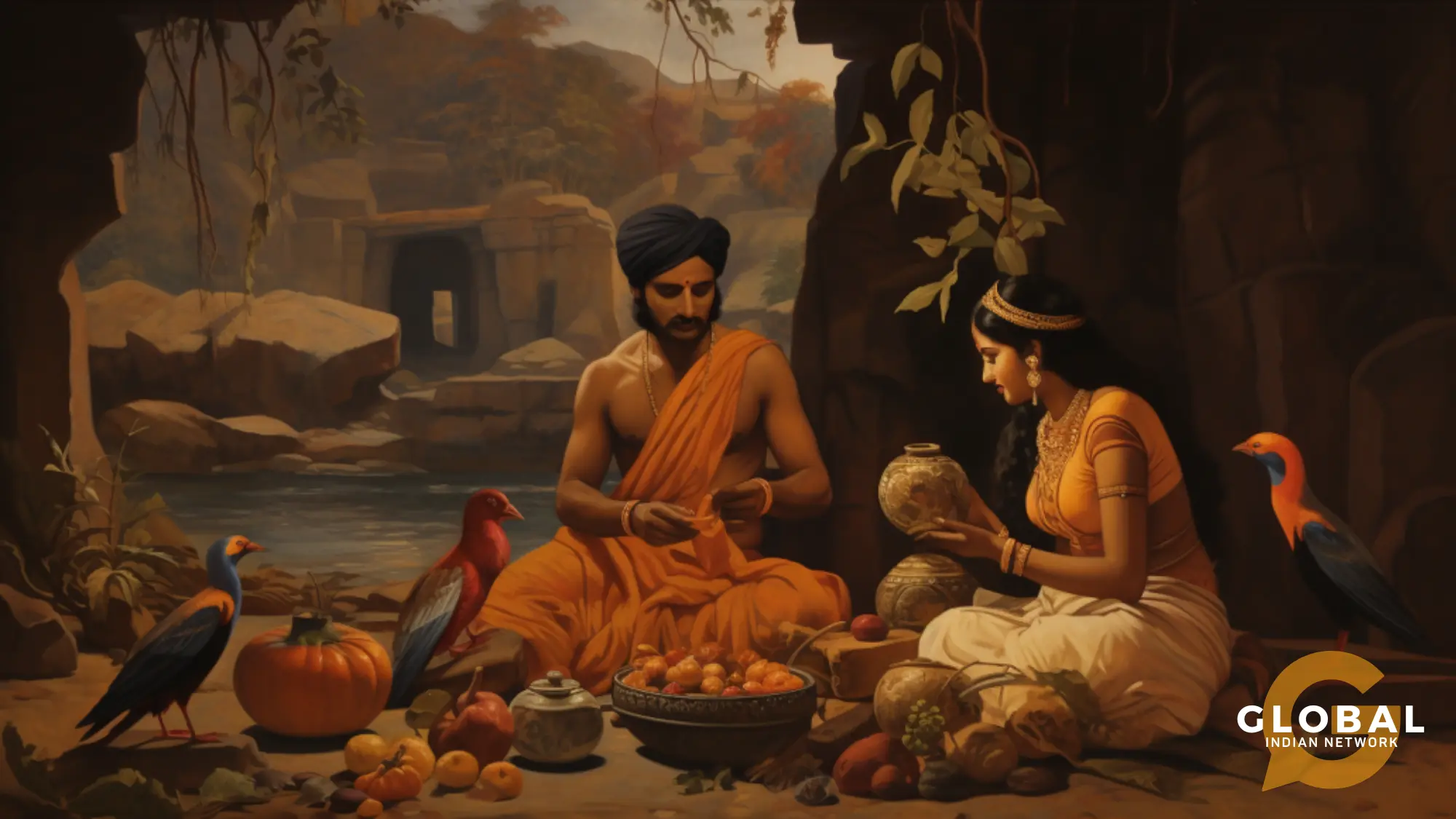
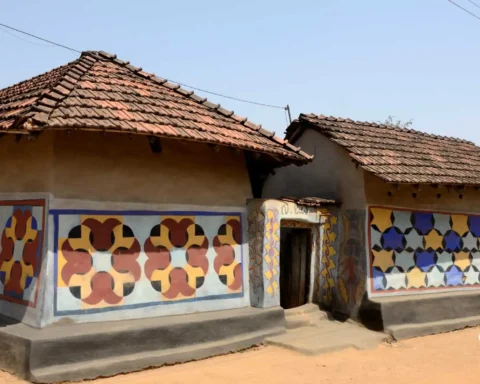
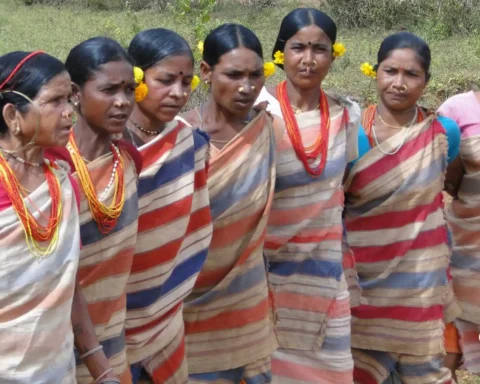
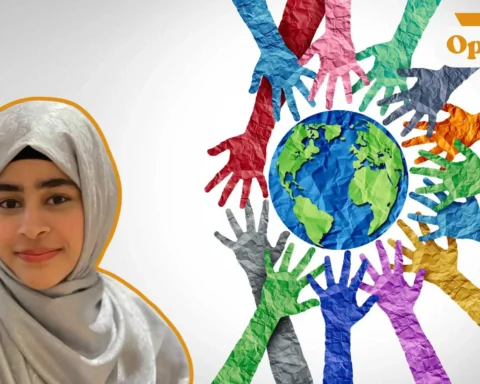
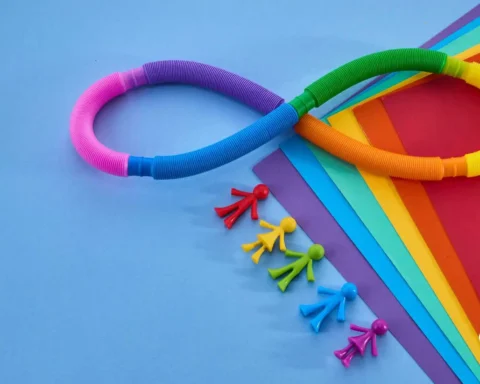


[…] exploring something interesting is indeed insightful; moreover, when it's related to someone's culture and tradition, it becomes more interesting and amusing; not only that, it also comes with various […]